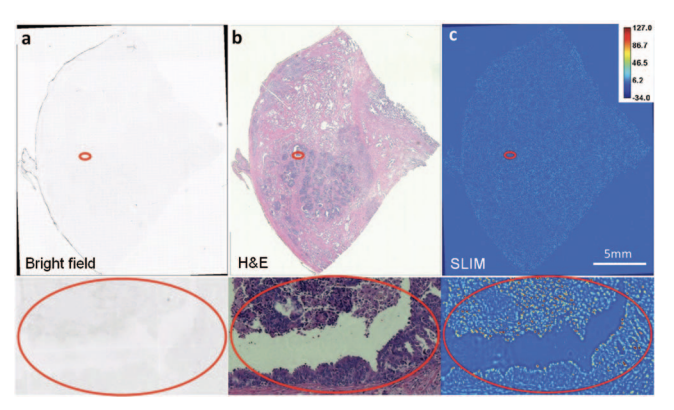TISSUE REFRACTIVE INDEX AS MARKER OF DISEASE, J. BIOMED. OPT. 16(11), 2011
Z. WANG, A. BALLA, K. TANGELLA AND G. POPESCU
2011
![]()

The gold standard in histopathology relies on manual investigation of stained tissue biopsies. A sensitive and quantitative method for in situ tissue specimen inspection is highly desirable, as it would allow early disease diagnosis and automatic screening. Here we demonstrate that quantitative phase imaging of entire unstained biopsies has the potential to fulfill this requirement. Our data indicates that the refractive index distribution of histopathology slides, which contains information about the molecular scale organization of tissue, reveals prostate tumors and breast calcifications. These optical maps report on subtle, nanoscale morphological properties of tissues and cells that cannot be recovered by common stains, including hematoxylin and eosin. We found that cancer progression significantly alters the tissue organization, as exhibited by consistently higher refractive index variance in prostate tumors versus normal regions. Furthermore, using the quantitative phase information, we obtained the spatially resolved scattering mean free path and anisotropy factor g for entire biopsies and demonstrated their direct correlation with tumor presence. In essence, our results show that the tissue refractive index reports on the nanoscale tissue architecture and, in principle, can be used as an intrinsic marker for cancer diagnosis.
